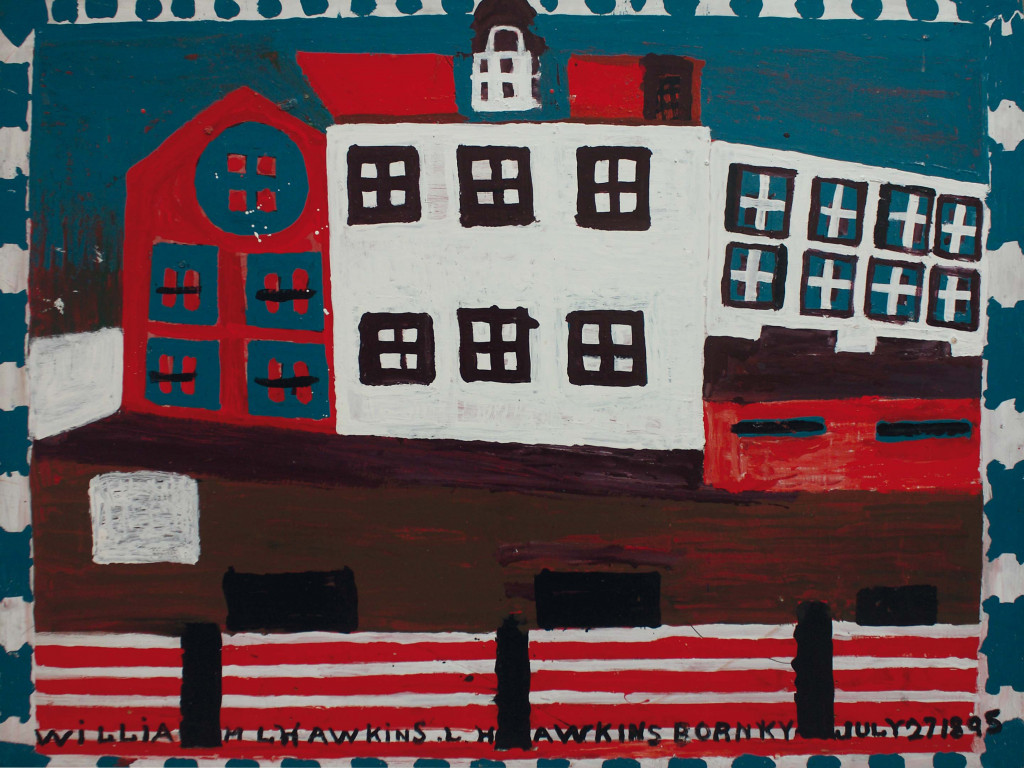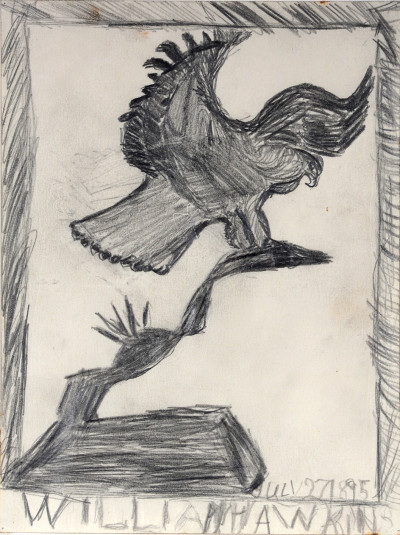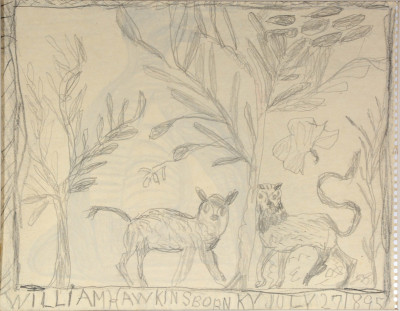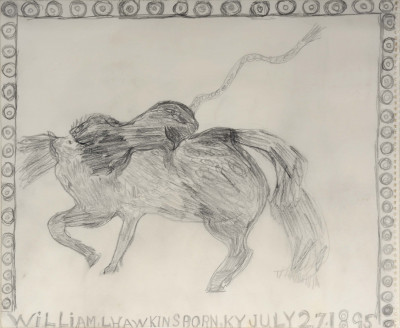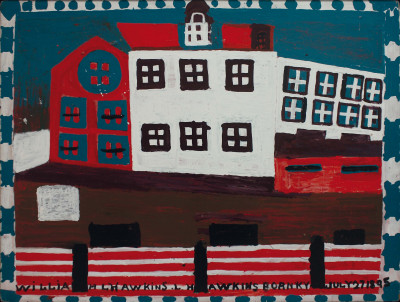William Hawkins
William Hawkins has grown up in a farm in Kentucky, but he spent the most part of his life in Ohio, after running away a wedding supposed to legitimize a disapproved pregnancy in 1916. William Hawkins seems to have lived several lives: horses trainer, truck driver, procurer and junkman, but especially painter. Indeed in the 1930s he begins to represent animals and urban landscapes on plates of Masonite and plywood and cheap materials, like remains from industrial paint, which he spreads with a simple brush. He frequently uses sawdust or glitter, which he mixes to the paint to give it some texture and also proceeds to collages of images and papers from magazines or books. If his choices go to animals and buildings, he is also interested by religious topics and popular imaging inspired by media. His works are as surprising as unexpected, filled with symbolism, supported by a palette of lively colors, and writings repeating his name in a heady way, the place and date of his birth « WILLIAM.L.HAWKINS.BORN.KY.JULY.27.1895 » like an ID card or a passport for somewhere else.
In 1981, the artist Lee Garrett, Hawkins’ neighbor discovers his work and decides to encourage its distribution. He presents him to the New York gallery-owner, Roger Ricco, who will represent Hawkins until he dies in 1990.Seven years later, the Museum of American Folk Art organises a retrospective of his work which is part of big American museum collections today, like in the High Museum or the American Folk Art Museum. William Hawkins is considered as one of the biggest self-taught African-American artists of his generation.
